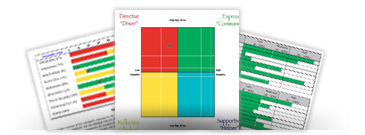How to Make More Money Using a Formal Sales Process
Salespeople are in the fortunate position of being almost fully in control of their earning power. While external factors, such as a recession, competitors, and government regulations do of course play their parts, in reality fortunes are made in sales even when those conditions are present. The difference in those that make the big money, and those that don’t, lies in the actions each performs on a daily basis.
Simply put: productive people do productive actions that lead to the money, while unproductive people flounder, usually with myriad excuses given as to why they just cannot make it. While lack of talent has something to do with sales failures, so does a lack of information on how to sell. Fortunately, by using a formal sales process, even inexperienced salespeople can be taught how to do the most productive things, in the proper order, to develop business using a consultative sales process.
Benefits of a Formal Sales Process
According to a 2011 Sales Performance Optimization Study, less than half of 1,275 B2B sales organizations surveyed have a formal sales process, and of the even smaller number that use a CRM, less than 10 percent of them have their sales processes built into it. This is a waste of opportunity, especially when it comes to capturing valuable metrics. With proper data collection in a CRM, managers can determine where a consultative sales process might be breaking down and take action to remedy.
As indicated in research by the TAS Group, other benefits of the formal sales process include:
• Salespeople are 50 percent more likely to meet their established quotas.
• Sales staff turnover, one of a company’s biggest headaches, is reduced by 39 percent.
• Sales personnel experience more success and make more money, increasing their loyalty and tenure with their company.
How to Develop and Use a Formal Sales Process
In the consultative sales process, the usual pattern that is followed is somewhat along these lines: prospect, contact, qualify for need and feasibility, pitch or present, handle objections, close and follow up/seek referrals. In establishing a formal sales process, keeping these steps in mind will help guide its development.
For example, to formalize the first steps from prospecting to initial contact, one might develop something as simple as:
1. Research the prospect using their website, Google and social media.
2. Enter all contact information into CRM.
3. Discover or develop a “coach,” someone close to the prospect or their organization that can provide a warm introduction.
4. Arrange an initial meeting with the coach and prospect.
5. Before the meeting, prepare the questions to be asked to fully determine the prospect’s need and our strategy in solving it based on the responses.
6. Build rapport at the initial meeting by getting them to talk about their interests before diving onto business.
For some sales organizations with high-value or complex services and products, a truly comprehensive formal sales process might be required to determine the exact costs expected in pursuing the business, the ROI for the buyer, an analysis of the competition, and the probability of success.
In conclusion, a formal consultative sales process adds value to a company by delineating best practices and proven procedures in an easy-to-follow guide or checklist format. This format will not only improve the results of existing sales personnel, but can also be used to train people new to the business and increase their chances of success, reducing turnover and leading to a bigger bottom line.



